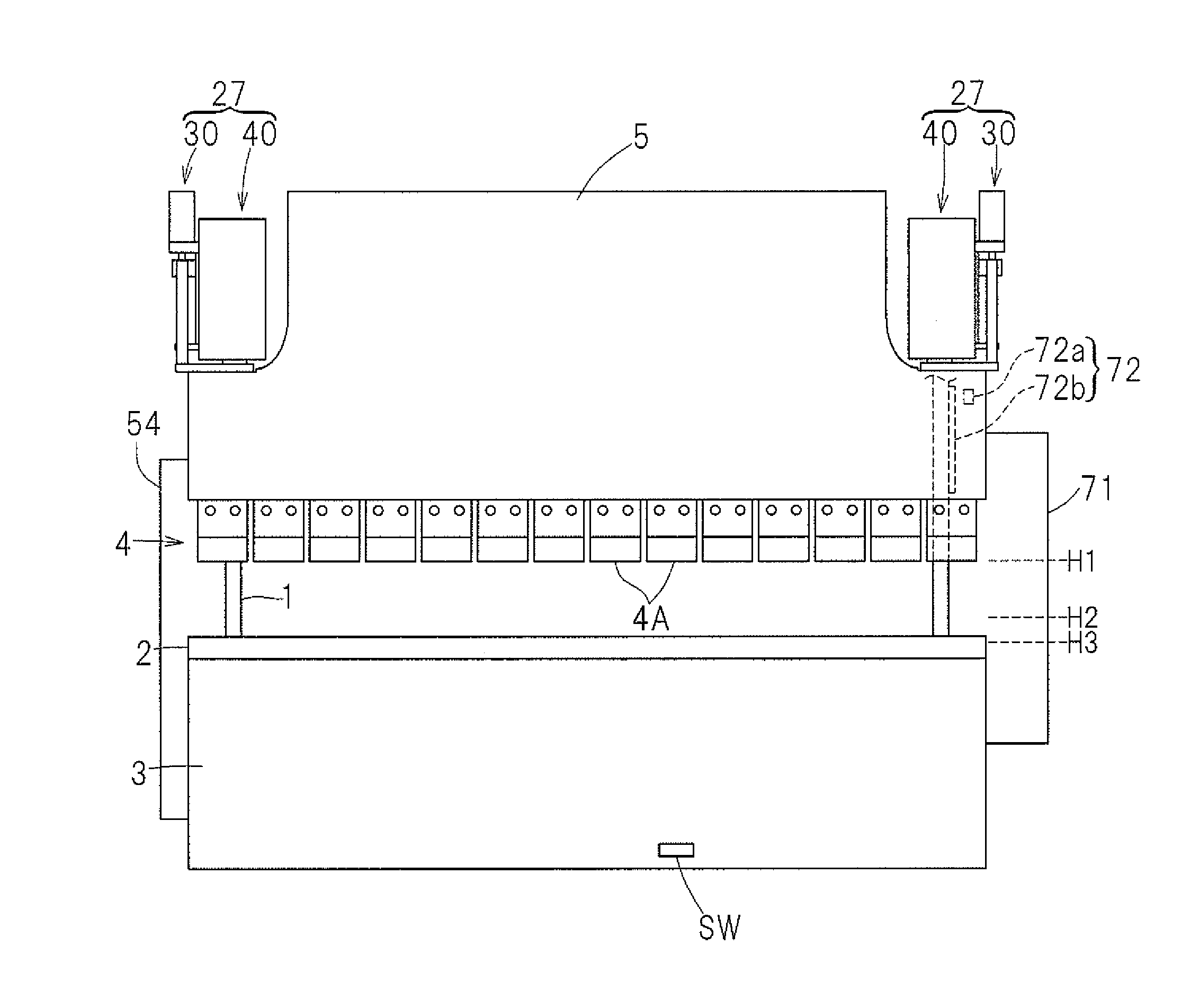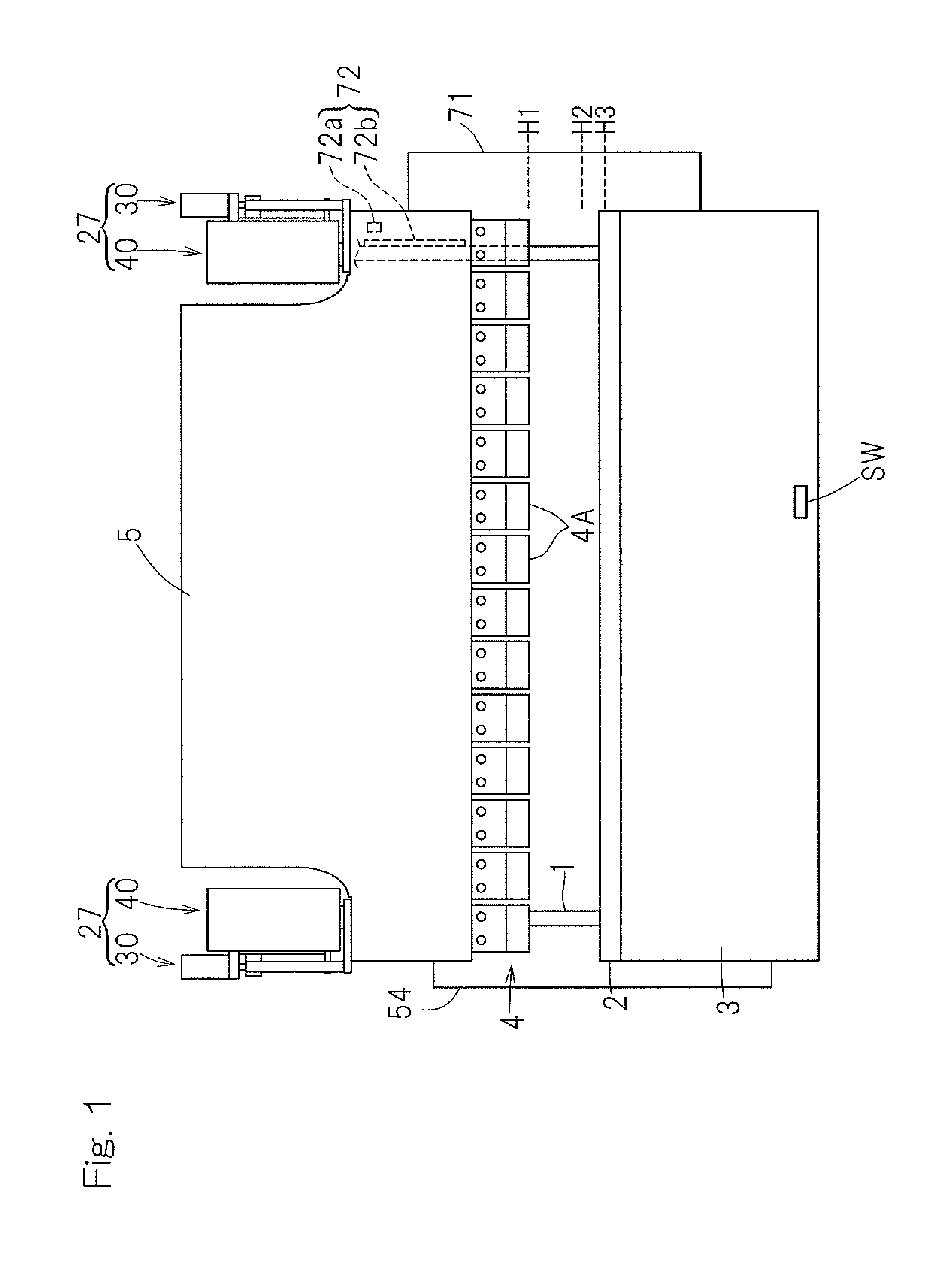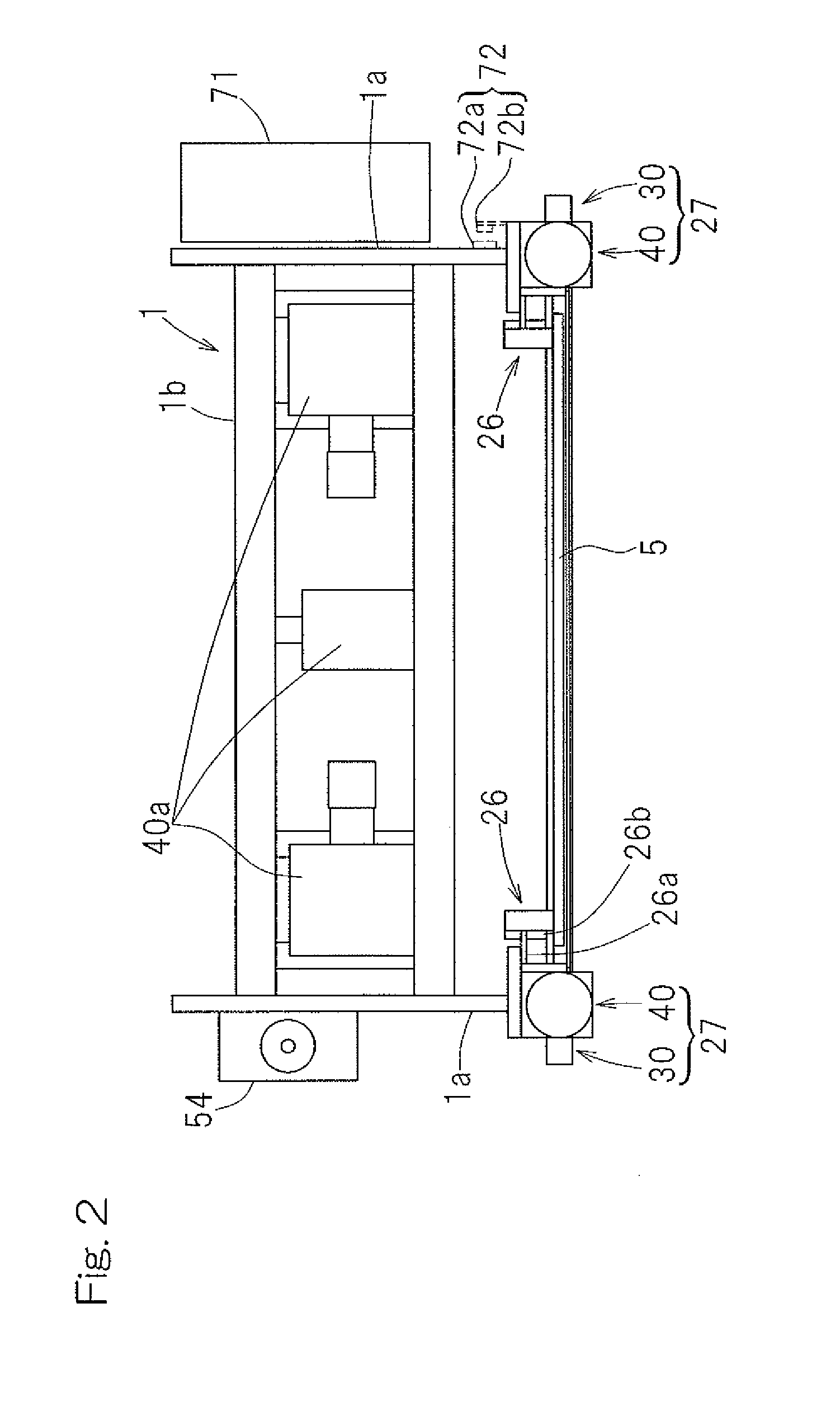Press machine
a press machine and ram technology, applied in the field of press machines, can solve the problems of difficult to stop the ram completely, difficult to control the speed, and difficulty in halting the ram down, so as to reduce the number of control valves used, reduce the number of control valves, and reduce the driving force.
- Summary
- Abstract
- Description
- Claims
- Application Information
AI Technical Summary
Benefits of technology
Problems solved by technology
Method used
Image
Examples
Embodiment Construction
[0039]Preferred embodiments of the present invention will now be described in detail with particular reference to the accompanying drawings. FIG. 1 illustrates a front elevational view of a press machine designed in accordance with a preferred embodiment of the present invention, FIG. 2 is a top plan view of such press machine, and FIG. 3 is a side view of such press machine. The illustrated press machine is a press brake, which includes a main body frame 1 having its front surface side provided with a table 3 to support a lower die 2, which may be a die on the stationary side, i.e., a stationary die, and a ram 5 defining and serving as a movable support member to support an upper die 4, which may be a die on the movable side, i.e., a movable die. The table 3 is fixed in position relative to the main body frame 1, but the ram 5 is movable up and down with its left and right side portions guided by respective guide units 26 as shown in FIGS. 2 and 3. The lower die 2 preferably is a u...
PUM
| Property | Measurement | Unit |
|---|---|---|
| weight | aaaaa | aaaaa |
| driving force | aaaaa | aaaaa |
| pressure | aaaaa | aaaaa |
Abstract
Description
Claims
Application Information
 Login to View More
Login to View More - R&D
- Intellectual Property
- Life Sciences
- Materials
- Tech Scout
- Unparalleled Data Quality
- Higher Quality Content
- 60% Fewer Hallucinations
Browse by: Latest US Patents, China's latest patents, Technical Efficacy Thesaurus, Application Domain, Technology Topic, Popular Technical Reports.
© 2025 PatSnap. All rights reserved.Legal|Privacy policy|Modern Slavery Act Transparency Statement|Sitemap|About US| Contact US: help@patsnap.com



